Among the many different ways in which you can grow marijuana, hydroponic gardening is a prominent method for the modern-day growers. While it is not a ‘traditional’ means of growing weed, but hydroponic weed is something which is indeed getting popular with the growers. Over the course of this article, we shall be taking a closer look at what exactly is hydroponic weed and how to grow it.
We shall be giving a detailed look at how to grow hydroponic weed and a step by step guide to setting up a system of growth for the same. Moreover, we will also discuss some basics about what the concept of hydroponics is and what are the pros and cons of it. We will also be giving a detailed look to some specific elements such as the nutrients which are used in this kind of growth process. Lastly, we shall conclude after answering some frequently asked questions about hydroponic weed.
What is Hydroponic Weed?
The primary theme of this article is understanding hydroponic weed and how we grow it. For this, you must first know what hydroponics is. The word itself comes from ‘hydros + ponos’ which basically means ‘labour of water’. Here, water is used as the primary means of providing nutrients to the weed and there is no need for any other medium – be it soil or non-soil based. Water is directly provided to the roots of the plants instead of them having to seek it from any other medium. This makes sure that the growth is faster and that the yields are higher.
Growing hydroponic weed is a good concept on paper but when you try it out, building the setup required for growing this kind of weed is quite complex to build. This is what turns away many first-time growers from this process. However, we have got the perfect guide for growing hydroponic weed here and we hope this helps you figure out the nuances and lets you grow your own weed utilizing this method.
Benefits of Growing Weed Hydroponically
What really draws people towards growing their weed using hydroponic gardening process is that working with soil becomes too messy after a while. Once you’re used to growing weed using soil-based medium, you will understand that there are a number of drawbacks. The first and the foremost problem is that of spillage and dirt – working with soil is quite messy, as we’ve pointed out earlier and it gets the floor, the tray, the pots, and your hands dirty. Furthermore, soil attracts pests and insects as they tend to dwell in these messy areas. Add to that the waterlogging in soil and it makes it a breeding ground for insects.
When you use soil as a medium, there’s also the problem of understanding the quantity of nutrients as there’s a retention problem with soil. Furthermore the soil pH also needs to be monitored and tested time and again to make sure it is the right levels and is not damaging the plants. Soil-borne diseases are also a major problem for some growers, which is fixed when you remove soil as the medium while growing hydroponic weed. Lastly, the quality of your soil will have an impact on the product you’re growing. If you don’t use good quality soil or if the quality of your soil is damaged while you’re growing your weed in it, the final harvest might be affected due to it. Hence, hydroponics, where you remove soil and replace it with water as the primary medium of growth, resolves a lot of issues for the growers.
How to Grow Hydroponic Weed?
Now that you know what hydroponic weed is and what is the advantage of growing marijuana using hydroponics rather than using soil-based mediums, let us take a detailed look at how to grow hydroponic weed. Here, we have broken this down in two sub-sections – the first one talks about the things that you will need to grow this kind of weed and the second one talks about how to set it all up together so that you can grow your weed in that setup.
Equipment Needed to Grow Hydroponic Weed
There are two kinds of hydroponic growers – firstly those who like to buy ready-made and assembled hydroponic grow kits which are delivered to them and they can start running it. Secondly, there are those growers who like to assemble their kits by themselves. Here, we shall be addressing the latter kind of growers who would like to ensure they are getting the best possible equipment and putting it all together to set up their hydroponic weed growing system. Here’s the equipment that you will need:
- One bucket of 3 to 5 gallons per plant
- Plastic tubes
- Clay pellets to fill all the buckets
- Drip lines and drip line emitters (one emitter per plant)
- A reservoir tank big enough to supply water to all your plants
- A grow table where these buckets would be kept
- A water pump (big enough to support all the plants)
- An air pump and an air stone
- One 1.5 inch rockwool cube per plant
Read more: 5 Cheaper Alternatives to Pricey Hydroponic Nutrients
Setting Up a Hydroponic Weed Growing System
Here comes the most important part of the article and perhaps the reason as to why you decided to visit this page in the first place. Let us now take a look at how to set up a hydroponic weed growing system using all the equipment that we have mentioned above. We have given out a step by step plan and process on how to achieve this:
- Step 1: The first thing that you should focus on setting up is the reservoir tank. This is the place where the nutrient solution is stored in and enters the system from. Imagine this as a very large tub with an air stone and a water pump inside it. Water is circulated from this reservoir and this is where it returns to. A drip pipe attached to this reservoir takes the water from the tank to the grow table, while the water from the grow table returns to this tank via a drainage pipe coming out of the table. This ensures recycling and reusing the water. The air stone inside the reservoir will be connected to an air pump on the outside.
- Step 2: After you have set up the reservoir tank, we need to focus on the grow table next. Imagine this table as a big tray which has a ‘low point’ where the water can flow through and circulate among the plants which will also be kept on the table. The water that goes up from the reservoir via the drip line goes directly into the buckets of the plants and from these pots, which have multiple openings all over them, the water is collected on the table, from where it drains out back into the reservoir.
- Step 3: After having set up the reservoir and the table, it is now time to set up the buckets and the plants. First off, soak the clay pellets for an entire night in water and then fill them in the 5 gallon buckets that you are going to use to grow weed in. Then drill holes in the lower portion (the bottom piece) of the bucket so that excess water can flow out of it. Make sure that the holes are not bigger than the clay pellets or else the pellets will start falling out.
- Step 4: Now, you take the drip line that comes out of the reservoir tank and place it upon the grow table. Then drill holes on the buckets in a linear manner so that the drip line can be passed through all of them. Make sure you seal any excess space in these openings to avoid spillage. Then in each bucket attach one or two drip line emitters per bucket so that water can be distributed across the buckets evenly.
- Step 5: Now that the reservoir, grow table and the drip lines have all been set up, you can do a test of the water flow to check if the circulation system is working as intended. This is a system which continuously needs to be in motion – the water pump as well as the air pump both need to be on at all times and the water needs to be circulated throughout. The air pump helps oxygenate the water, making it good for the plants. Once you’ve checked that everything is working as intended, it is now time for bringing in the plants.
- Step 8: We go back a little here. Before you start with step 1, you will need to put your hydroponic weed plants inside a rockwool cube so that they start their basic growth over there. However, it is best recommended to use a cut clone because they’re already equal to a seedling phase. Insert the clone in the rockwool cube and place the rockwool cube on the clay pellets. Make sure your plant isn’t submerged and there’s sufficient space for it to get air. Only the rockwool has to be in water.
This is it! This is the primary setup that needs to be there in order for you to ensure that your hydroponic weed plants are going to get a proper growth. Another important component is the nutrients which are to be mixed in the water. In the next section we take a detailed look at the nutrients and understand how to provide them to your plants.
Read more: Best Indoor Hydroponic Garden Kits in 2020
Nutrients for Growing Hydroponic Weed
One major difference between growing via a soil-based medium and a non-soil medium is that there are normally some nutrients present in the soil while those who use ‘super soil’ can get some really good nutrient-rich custom variety of soil. However, in a water based medium, you will need to be extra cautious and provide all the nutrients by yourself, mixed in the water. This includes not only the primary (macronutrients) NPK nutrients, which are Nitrogen (N), Phosphorus (P) and Potassium (K), but also the secondary nutrients (micronutrients). These micronutrients include the likes of Zinc, Sulfur, Boron, Iron, Calcium, Magnesium and Copper among others.
When it comes to macronutrients, the one thing that you need to know is Nitrogen is something that the plant needs a lot of in the early (vegetative) stage of its growth while the second half of its growth stage, the blooming stage, requires a lot of Phosphorus. Potassium is something which has to be provided during both the stages of the plant’s growth cycle. With regard to micronutrients, you can get them in separate packages (some will carry all mixed in one while others might be seperate) and they will instruct you on how much to provide and at what time. Generally, these need to be provided in a very little amount across all the phases of growth.
Another thing that you need to know about nutrients for hydroponic weed is that these nutrients come in different forms. These can either be available as liquid concentrates or as powders. Both of them have to be mixed in water to be provided to the plants. The powder form is cheaper and great for those who are producing large-scale marijuana. For those who are just starting out or have a small-scale production, liquid nutrients are recommended as they are easier to use and they mix with the water in a better manner.
One final thing that you need to take care while providing nutrients to your weed plants is that you will need to check their pH levels. In order for the marijuana plant to absorb the nutrients that you are providing it, the ideal pH levels need to be between 5.5 to 6. Anything below 5 or beyond 6.5 might become difficult for the plant to absorb and is going to either go to waste or put stress on the plants and damage them. Keep switching your solutions from the reservoir every week or ten days to ensure freshness.
Read more: How To Grow Marijuana Plants Using Hydroponics Technique
Pros and Cons of Hydroponics
We hope that by this point you have understood fully what hydroponics is, how hydroponic weed is grown and how to provide it with the right amount of nutrients in order to get a proper growth out of it. Let us now take a look at some advantages and disadvantages of growing this kind of weed
Pros
- One of the biggest benefits of growing weed this way is that this method allows you to grow weed anywhere and you no longer are restricted to fertile grounds.
- Another big benefit of using this sort of a setup for growing marijuana is that it saves on water. Water is recycled and reused in the process. It consumes a lot less water compared to traditional soil-based method of growing marijuana.
- Since there is no soil involved, you have the full control over the amount of nutrients and the type of nutrients that you are providing your plant with.
- Hydroponic weed is safe from diseases that are soil-borne, that may affect other cannabis plants being grown on soil.
- Hydroponic growth provides faster yield and bigger returns compared to traditional methods of growing marijuana.
- This method of growing weed eases the stress on the roots as they do not have to seek the water.
Cons
- The cost of setting up a system for hydroponic growth is quite high compared to growing weed outdoors or even a typical process of indoor growth.
- A power outage can have a significant impact as the circulation of water would stop.
- While there is no risk of soilborne diseases, water-borne plant diseases tend to spread at a much faster rate so you need to watch out for that.
Read more: How to Set up a Hydroponic Grow Closet
Frequently Asked Questions (FAQs) About Hydroponic Weed
Here’s a look at some of the most frequently asked questions about growing hydroponic weed. Do go through them carefully as they might answer some of your queries as well.
1. What is the difference between growing weed in soil vs growing weed hydroponically?
The primary difference is that when you grow weed via soil as a medium, the nutrients that you provide your plant travel via the soil and the roots have to seek them out and absorb them. In hydroponic growth, the nutrients are mixed in the water and the water has direct access to the roots which means the roots no longer need to go and seek it. This saves a lot of time and provides the plants with a constant supply of nutrients. In this method of growing hydroponic weed, the plants will grow faster and provide higher yields when you compare it with the traditional soil based method of growing marijuana.
2. Which is the best grow light option for growing hydroponic weed?
All plants need sunlight to grow. However, when you grow them indoors, you need to replace the natural light of the sun with grow lights. The best types of grow lights for growing hydroponic marijuana are the LED grow lights. More specifically, full-spectrum LED grow lights (preferably those which come with dimmers). Full spectrum LED lights are able to replicate the natural sunlight to the closest possible extent and they provide the plants with different forms of lighting to aid them with better growth across different phases. LED grow lights also consume much less power and last longer compared to older forms of lighting.
3. What is aeroponics?
Aeroponics is something about which we tend to get a lot of questions. One misconception is that this is different from hydroponics. It is actually a type of hydroponic growth where the roots of the plants do not have to be submerged in water but water is sprayed upon them with the help of sprinklers. Basically here the water pump has a setup where there are misting valves attached to it and each sprays out mist which is then provided to the roots which are suspended in the air and not submerged in the water. You do not need an air pump here but this mist which reaches the roots will itself have a lot of oxygen because the roots are hanging out in the open.
Read more: What is Flushing and How to Flush Hydroponics?
Conclusion
To sum this all up, hydroponics sounds like a very complex process at first. However, for those who have been growing for at least one season and for those who know the basics of growing weed – it is actually quite simple. You just need to understand the mechanism behind how hydroponic weed is grown and then it will all be quite easy. Over the course of this article, we have aimed at explaining the blueprint of hydroponic growth and we hope that this has helped you understand it in a better manner. If you have any other queries or if you feel we’ve missed out on something, drop us a mail or let us know in the comments and we shall get back to you soon. Till then…
…Happy Growing! 🙂
Table of Contents


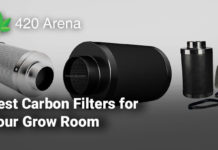
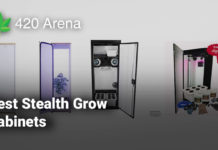





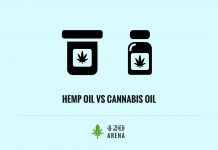



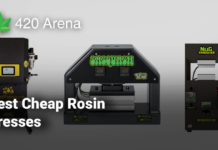


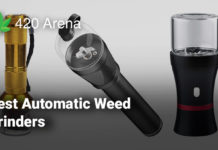
![How to Use Carbon Filters in Your Grow Room [7 Best Carbon Filters for Grow Rooms in 2021] How to Use Carbon Filters in Your Grow Room](https://420arena.com/wp-content/uploads/2020/12/How-to-Use-Carbon-Filters-in-Your-Grow-Room-218x150.jpg)







![How to Make a DIY Bubble Cloner [Complete Guide] How to Make a DIY Bubble Cloner](https://420arena.com/wp-content/uploads/2021/02/How-to-Make-a-DIY-Bubble-Cloner-218x150.jpg)





